Logarithmic Mean Divisia Index Decomposition of CO2 Emissions from Urban Passenger Transport: An Empirical Study of Global Cities from 1960–2001
Abstract
1. Introduction
2. Literature Review
3. Methodology
3.1. Research Area
3.2. Data
3.3. Passenger Transport CO2 Emissions Calculation
3.4. Decomposition Methodology
4. Results and Discussion
4.1. CO2 Emissions Calculation Results
4.2. CO2 Emissions Decomposition Results—A Comparison of Megacities and Other Cities
4.3. CO2 Emissions Decomposition Results for the Four Megacities
4.4. Policy Implications
5. Conclusions and Suggestions
- (i)
- Urban passenger transport CO2 emissions in both megacities and other cities experienced decelerated growth and a reduction from 1960–2001. It peaked during the 1990s for most cities over the study period. High CO2 emissions cities are mainly distributed in the United States, such as New York, Los Angeles. European cities such as Copenhagen and Zurich have relatively low emissions.
- (ii)
- From 1960 to 1970, the contributions of the urbanization effect (Dp) and motorization effect (Dl) to passenger transport sector CO2 emissions growth in other cities were larger than those in megacities because urbanization and motorization processes in other cities were more rapid from 1960–1970. From 1960 to 1996, mode structure effect played a more important role in influencing CO2 emissions from the urban passenger transport in megacities than in other cities. From 1996 to 2001, the main inhibitory effects of CO2 emissions growth were mainly from the improvement of the public transport share and reduction in the trip distance per capita in both types of cities.
- (iii)
- Energy intensity effect was the main inhibitory factor of urban passenger CO2 emissions growth in megacities (London, Paris, New York, and Tokyo) from 1980–1990 because the government focused on improving the fuel economy of motor vehicles after the oil crisis. From 1970 to 1990, counter-urbanization led to longer trip distances and increased private transport shares, thereby promoting CO2 emissions growth in megacities.
- (i)
- Rational land use, such as transit-oriented development, is a feasible way to make average travel distances shorter and decrease the motorization level.
- (ii)
- Fuel economy policies and standards formulated when oil prices are high are effective ways to suppress the increase of CO2 emissions from urban transport. These policies should not be abandoned when oil prices fall. Oil crises provide important opportunities for improving the fuel economy.
- (iii)
- Cities with high population densities should focus on the development of public and non-motorized transport. Some rules should be implemented to prevent the unlimited spread of cities and counter-urbanization.
Author Contributions
Funding
Acknowledgments
Conflicts of Interest
References
- Nakamura, K.; Hayashi, Y. Strategies and instruments for low-carbon urban transport: An international review on trends and effects. Transp. Policy 2013, 29, 264–274. [Google Scholar] [CrossRef]
- Conti, J.; Holtberg, P.; Diefenderfer, J.; LaRose, A.; Turnure, J.T.; Westfall, L. International Energy Outlook 2016 with Projections to 2040 (No. DOE/EIA-0484 (2016)); Office of Energy Analysis, USDOE Energy Information Administration (EIA): Washington, DC, USA, 2016. [Google Scholar]
- The International Energy Agency, CO2 Emissions from Fuel Combustion Highlights 2015. Oecd. Observer. 2015, 1–152.
- Liu, Y. Low carbon eco-city—The strategic choice of global city for sustainable development in the future under the influence of climate change. Urban Stud. 2010, 5, 35–41. [Google Scholar]
- Guan, H.L.; Chen, J.C.; Cao, W. Empirical study on the relationship between carbon emission and urbanization. China Popul. Resour. Environ. 2013. [Google Scholar]
- Ang, B.W.; Goh, T. Index decomposition analysis for comparing emission scenarios: Applications and challenges. Energy Econ. 2019, 83, 74–87. [Google Scholar] [CrossRef]
- Ang, B.W.; Liu, F.L. A new energy decomposition method: Perfect in decomposition and consistent in aggregation. Energy 2001, 26, 537–548. [Google Scholar] [CrossRef]
- Ang, B.W. Decomposition analysis for policymaking in energy: Which is the preferred method? Energy Policy 2004, 32, 1131–1139. [Google Scholar] [CrossRef]
- Schipper, L.; Scholl, L.; Price, L. Energy use and carbon emissions from freight in 10 industrialized countries: An analysis of trends from 1973 to 1992. Transp. Res. Part D Transp. Environ. 1997, 2, 57–76. [Google Scholar] [CrossRef]
- Johansson, O.; Schipper, L. Measuring the long-run fuel demand of cars: Separate estimations of vehicle stock, mean fuel intensity, and mean annual driving distance. J. Transp. Econ. Policy 1997, 31, 277–292. Available online: https://www.jstor.org/stable/20053740 (accessed on 1 August 2018).
- Moutinho, V.; Moreira, A.C.; Silva, P.M. The driving forces of change in energy-related CO2 emissions in Eastern, Western, Northern and Southern Europe: The LMDI approach to decomposition analysis. Renew. Sustain. Energy Rev. 2015, 50, 1485–1499. [Google Scholar] [CrossRef]
- Yeo, Y.; Shim, D.; Lee, J.D.; Altmann, J. Driving Forces of CO2 Emissions in Emerging Countries: LMDI Decomposition Analysis on China and India’s Residential Sector. Sustainability 2015, 7, 16108–16129. [Google Scholar] [CrossRef]
- Timilsina, G.R.; Shrestha, A. Why Have CO2 Emissions Increased in the Transport Sector in Asia? Underlying Factors Policy Options 2009. [Google Scholar] [CrossRef]
- Li, H.; Zhao, Y.; Qiao, X.; Liu, Y.; Cao, Y.; Li, Y.; Weng, J. Identifying the driving forces of national and regional CO2 emissions in China: Based on temporal and spatial decomposition analysis models. Energy Econ. 2017, 68, 522–538. [Google Scholar] [CrossRef]
- Zhang, M.; Li, H.; Zhou, M.; Mu, H. Decomposition analysis of energy consumption in Chinese transportation sector. Appl. Energy 2011, 88, 2279–2285. [Google Scholar] [CrossRef]
- Jiang, J.; Ye, B.; Xie, D.; Tang, J. Provincial-level carbon emission drivers and emission reduction strategies in China: Combining multi-layer LMDI decomposition with hierarchical clustering. J. Clean. Prod. 2017, 169, 178–190. [Google Scholar] [CrossRef]
- Wang, Y.; Hayashi, Y.; Kato, H.; Liu, C. Decomposition analysis of CO2 emissions increase from the passenger transport sector in Shanghai, China. Int. J. Urban Sci. 2011, 15, 121–136. [Google Scholar] [CrossRef]
- Luo, X. A Study on Factor Decomposition for CO2 Emission Generation and Its Causal Mechanisms in Urban Transport: A Comparison between Shanghai and Tokyo; Nagoya University: Nagoya, Japan, 2013. [Google Scholar]
- Kenworthy, J.; Laube, F. An International Sourcebook of Automobile Dependence in Cities 1960–1990; University Press of Colorado: Niwot, CO, USA, 2010. [Google Scholar]
- Kenworthy, J.; Laube, F. Millennium Cities Database for Sustainable Transport; International Association of Public Transport (UITP): Brussels, Belgium, 2001. [Google Scholar]
- Intergovernmental Panel on Climate Change. Guidelines for National Greenhouse Gas Inventories; IPCC: Kyoto, Japan, 2006. [Google Scholar]
- Schipper, L.; Marie-Lilliu, C.; Gorham, R. Flexing the Link between Transport and Greenhouse Gas Emissions-A Path for the World Bank; Transportation Annual Meeting, Transportation Research Board (TRB): Washington, DC, USA, 2000. [Google Scholar]
- Bradshaw, C. The Green Transportation Hierarchy: A Guide for Personal and Public Decisionmaking. Available online: http://vault.sierraclub.org/sprawl/articles/trips.asp (accessed on 1 August 2018).
- Creutzig, F.; McGlynn, E.; Minx, J.; Edenhofer, O. Climate policies for road transport revisited (I): Evaluation of the current framework. Energy Policy 2011, 39, 2396–2406. [Google Scholar] [CrossRef]
- Senly, D. Paris Rive Gauche. Images, réseaux et financement de l’aménagement. In Les Annales de la Recherche Urbaine; Centre de Recherche d’Urbanisme: Paris, France, 1999; Volume 82, pp. 25–35. [Google Scholar]
- Desa, U. World urbanization prospects, the 2017 revision. In Final Report with Annex Tables; United Nations Department of Economic and Social Affairs: New York, NY, USA, 2017. [Google Scholar]
- The editorial department of the journal. Interpretation of the National New Urbanization Plan (2014–2020). China Econ. Trade Guide 2014, 29, 19–20. [Google Scholar]
- Millard-Ball, A.; Schipper, L. Are we reaching peak travel? Trends in passenger transport in eight industrialized countries. Trans. Rev. 2011, 31, 357–378. [Google Scholar] [CrossRef]
- Bristow, A.L.; Tight, M.; Pridmore, A.; May, A.D. Developing pathways to low carbon land-based passenger transport in Great Britain by 2050. Energy Policy 2008, 36, 3427–3435. [Google Scholar] [CrossRef]
- Sperling, D.; Gordon, D. Two Billion Cars: Driving toward Sustainability 0199744017; Oxford University Press: Oxford, UK, 2009. [Google Scholar]
- Grant, D.; Jorgenson, A.K.; Longhofer, W. How organizational and global factors condition the effects of energy efficiency on CO2 emission rebounds among the world’s power plants. Energy Policy 2016, 94, 89–93. [Google Scholar] [CrossRef]
- Mishina, Y.; Muromachi, Y. Are potential reductions in CO2 emissions via hybrid electric vehicles actualized in real traffic? The case of Japan. Transp. Res. Part D Transp. Environ. 2017, 50, 372–384. [Google Scholar] [CrossRef]
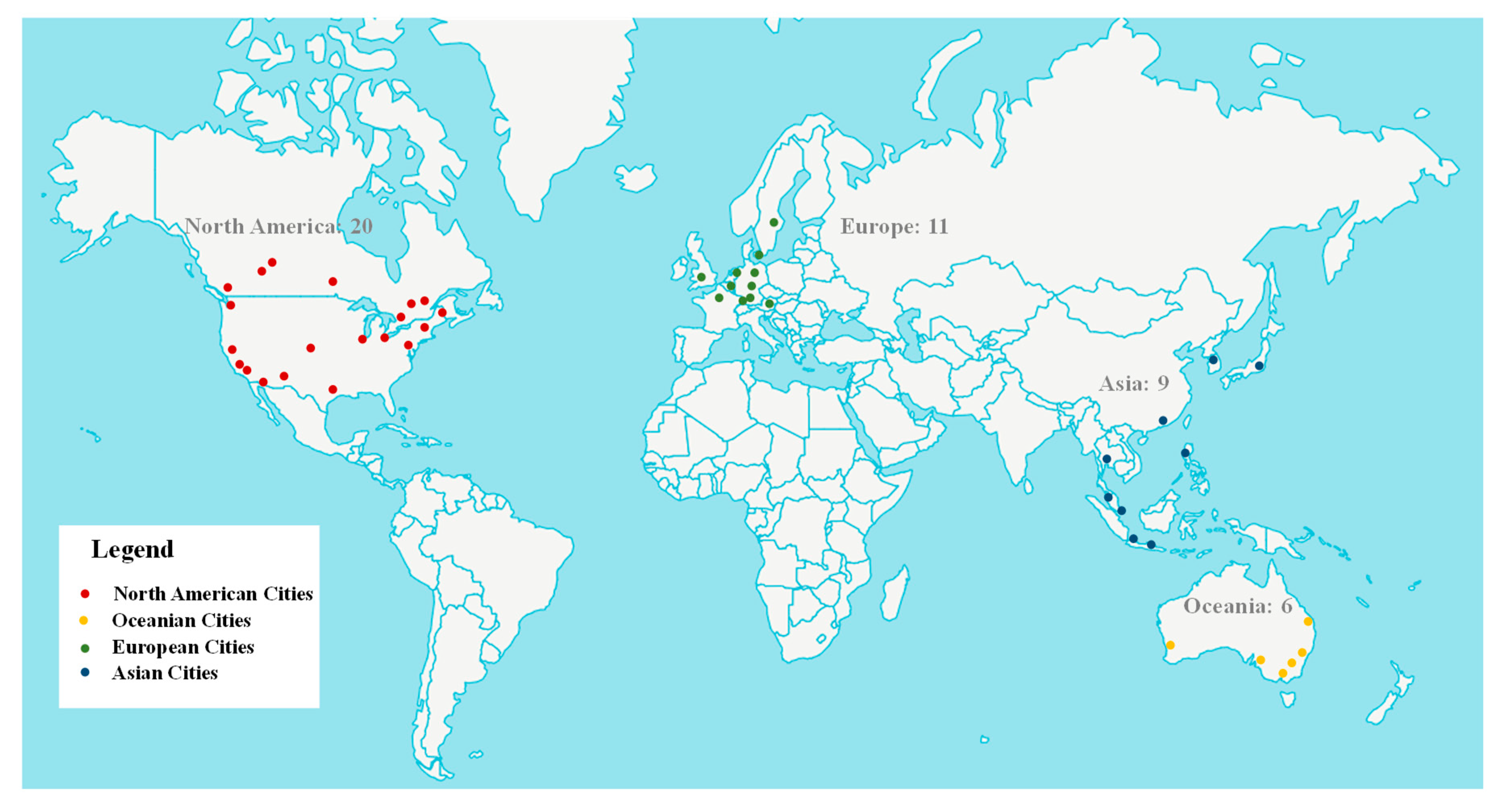
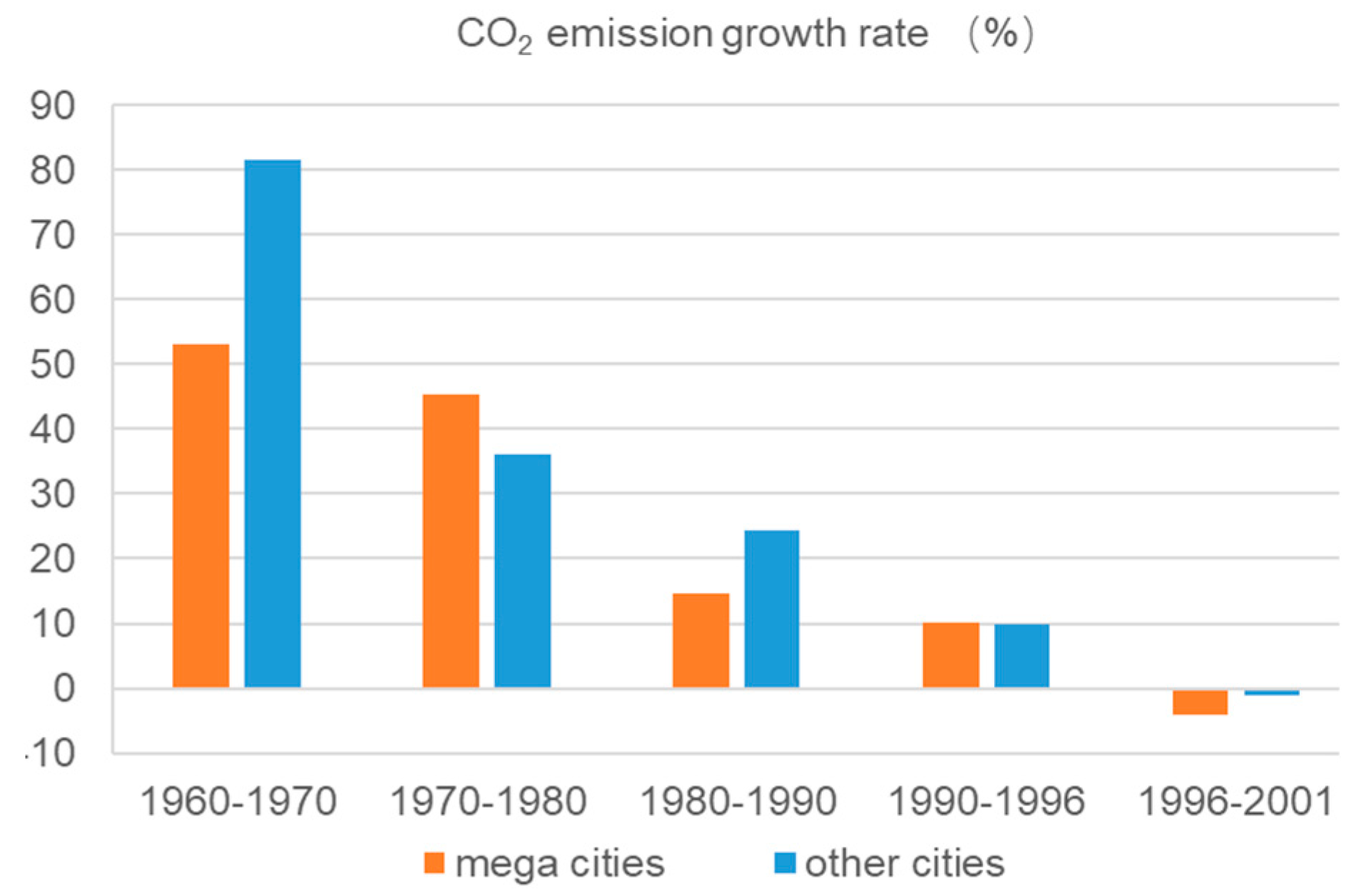
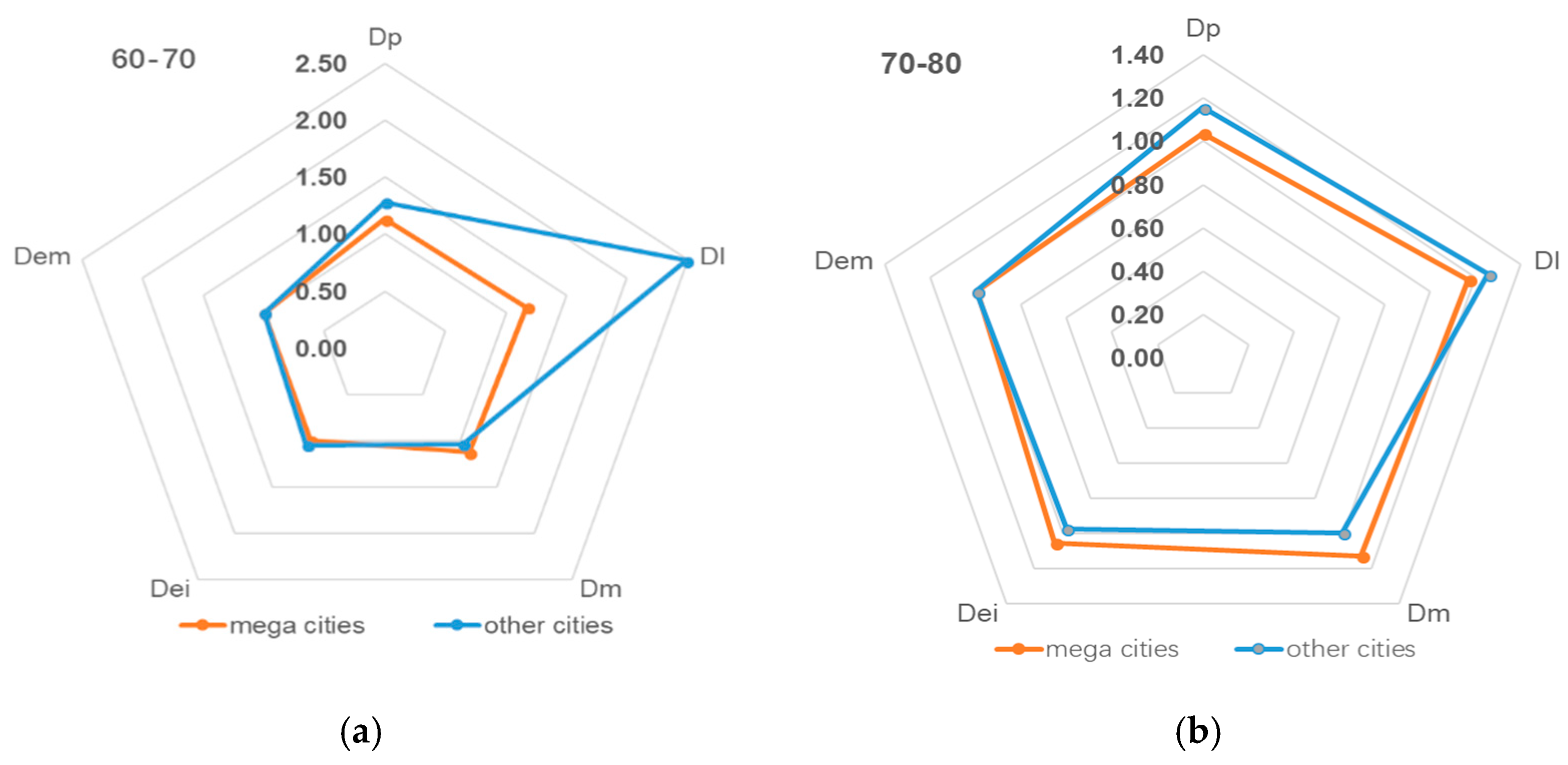
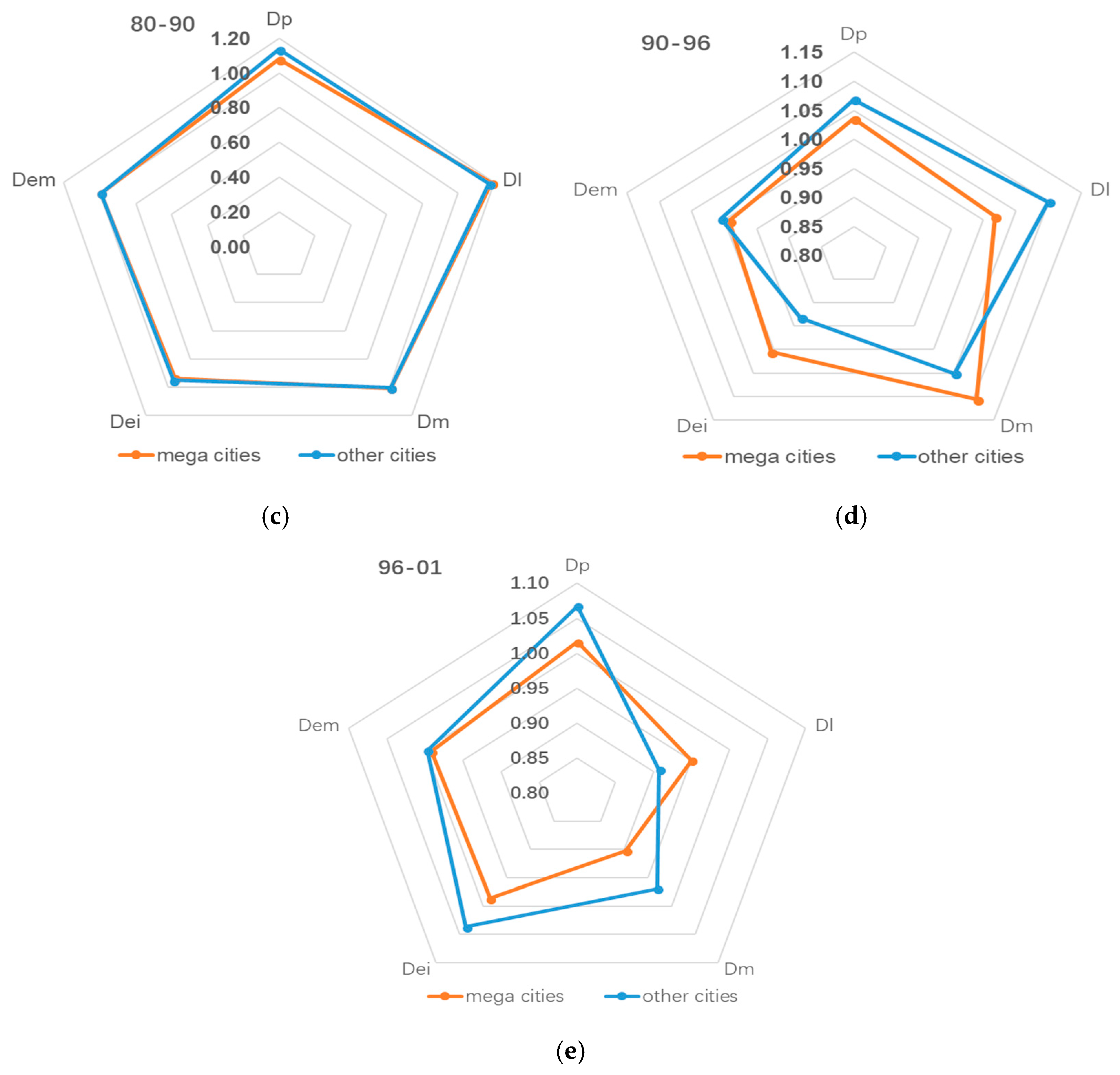

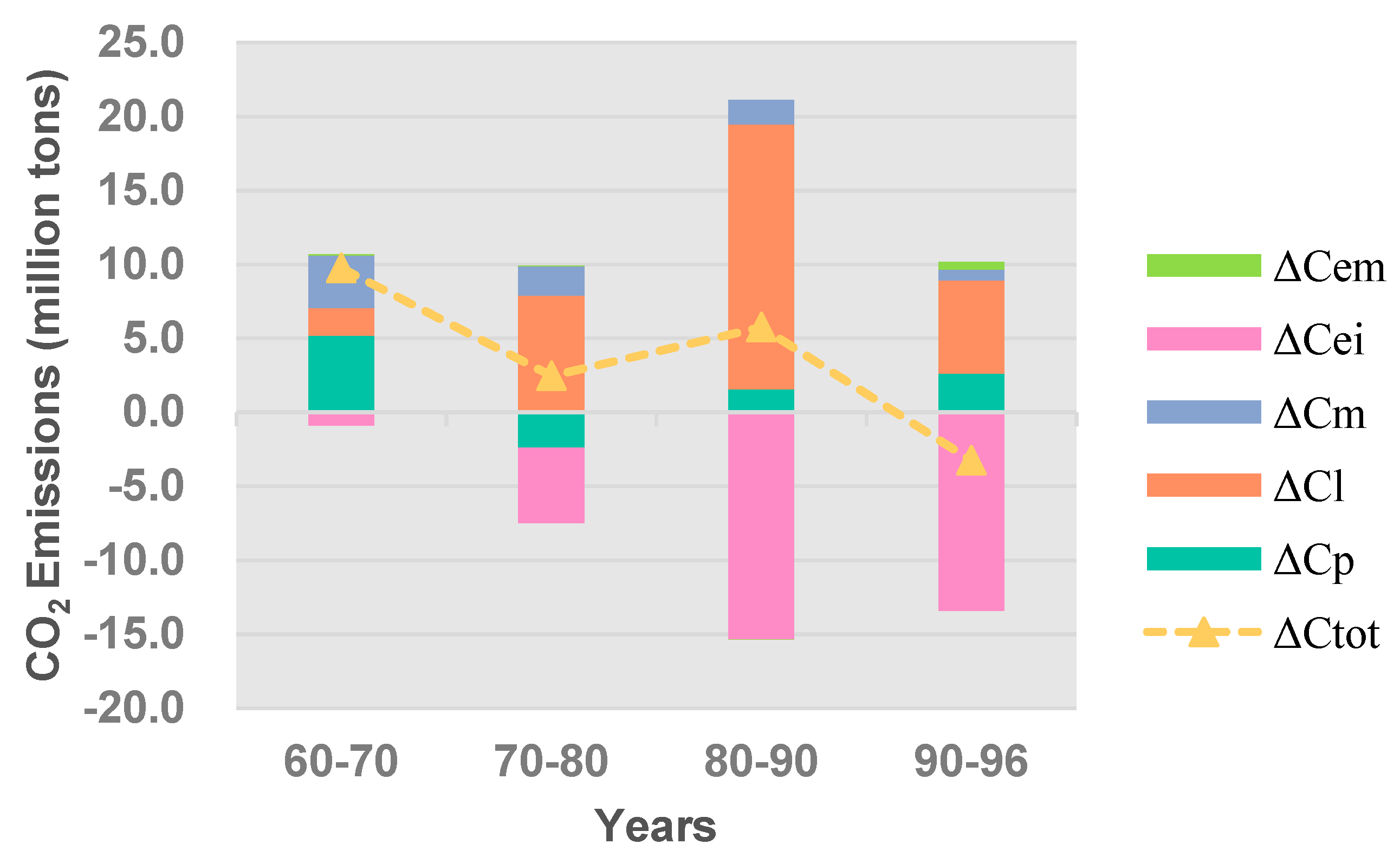
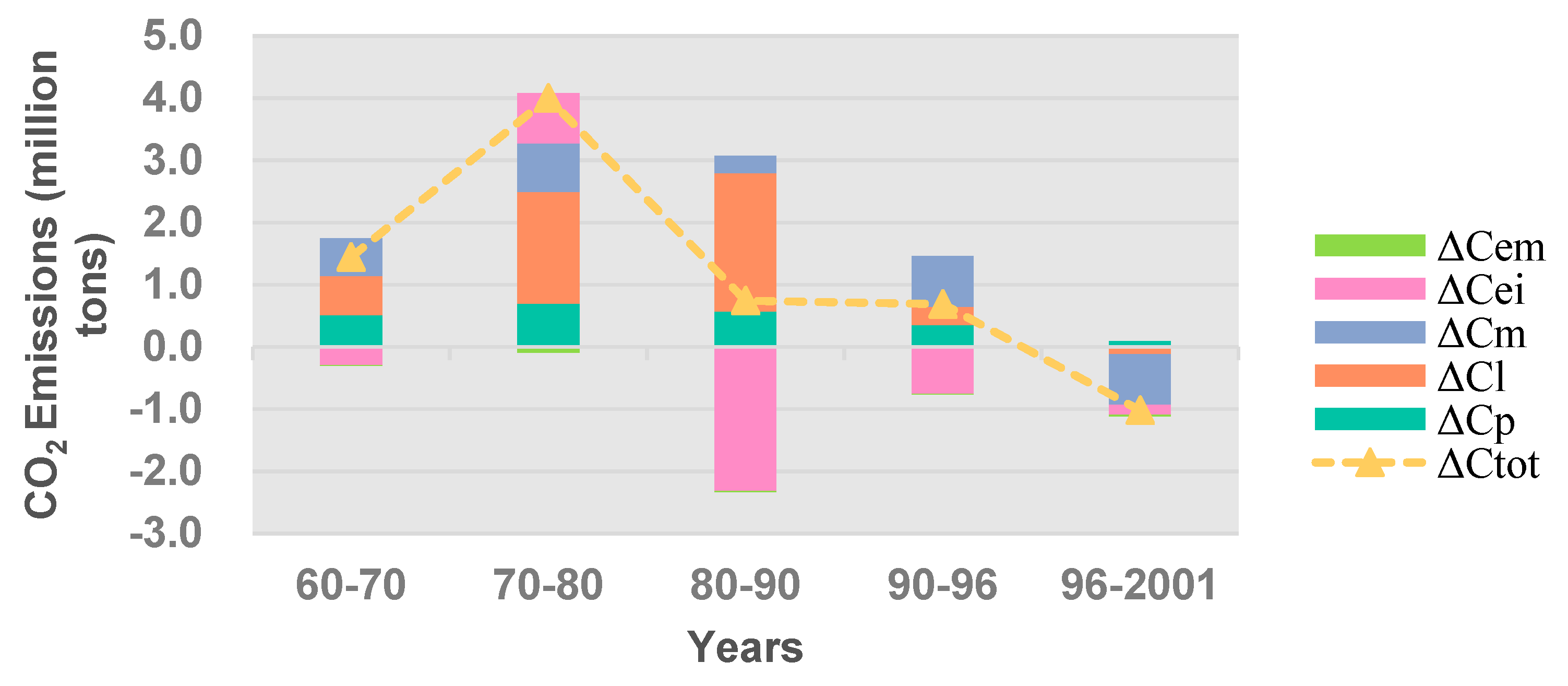
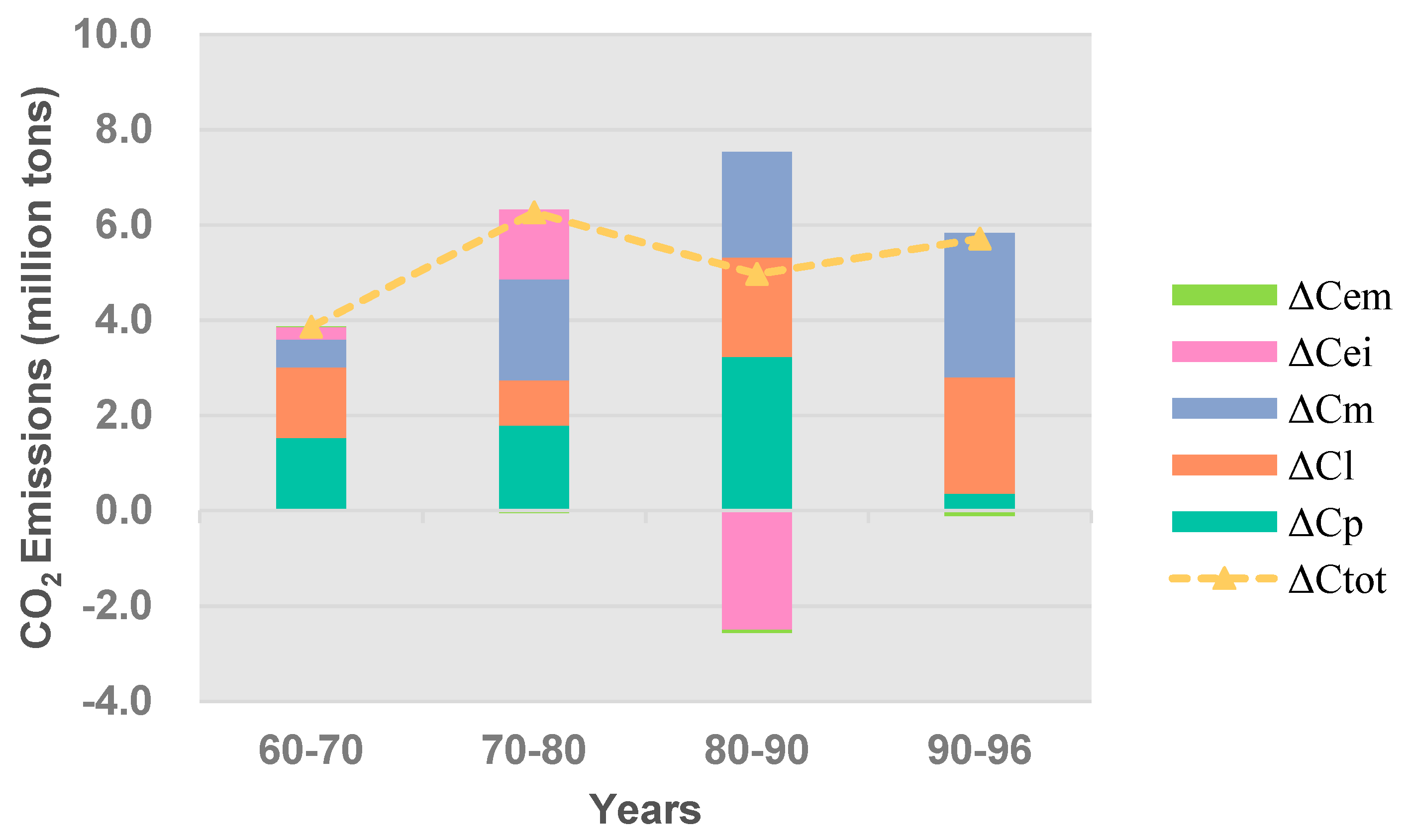
| Cities | Total CO2 Emissions (Tons) | |||||
|---|---|---|---|---|---|---|
| 1960 | 1970 | 1980 | 1990 | 1996 | 2001 | |
| Adelaide | 753,145 | 1,452,518 | 1,959,048 | 2,301,595 | —— | —— |
| Amsterdam | 139,354 | 410,849 | 409,081 | 547,084 | 477,197 | 424,334 |
| Bangkok | —— | —— | —— | 7,992,878 | 7,248,321 | —— |
| Brisbane | 942,360 | 1,335,469 | 2,446,702 | 2,952,208 | 3,226,841 | —— |
| Brussels | 399,989 | 803,985 | 1,059,818 | 1,452,356 | 1,342,890 | 1,181,509 |
| Calgary | 463,652 | 648,290 | 1,387,636 | 1,798,388 | 2,155,923 | —— |
| Canberra | 72,318 | 294,207 | 604,398 | 822,281 | —— | —— |
| Chicago | 11,984,967 | 20,672,796 | 24,364,656 | 23,944,161 | 23,807,436 | 24,572,262 |
| Copenhagen | 813,192 | 1,425,148 | 1,536,741 | 1,886,537 | 1,868,624 | 1,930,361 |
| Denver | 3,025,881 | 5,316,838 | 7,069,204 | 7,033,000 | 8,295,613 | —— |
| Detroit | 14,665,897 | 16,682,938 | 18,615,653 | 14,976,034 | —— | —— |
| Edmonton | —— | —— | —— | 1,401,608 | —— | —— |
| Frankfurt | —— | —— | 721,792 | 1,111,998 | 908,540 | —— |
| Hamburg | 666,854 | 1,624,628 | 2,001,373 | 2,427,573 | 2,338,561 | 2,292,189 |
| Hong Kong | —— | 597,704 | 968,492 | 1,399,872 | 2,742,408 | 2,173,105 |
| Houston | 4,589,931 | 8,720,103 | 14,126,373 | 15,431,244 | 23,315,558 | —— |
| Jakarta | —— | —— | —— | —— | 2,696,824 | —— |
| Kuala Lumpur | —— | —— | —— | 3,761,963 | 3,121,615 | —— |
| London | 3,809,240 | 5,036,130 | 6,089,349 | 6,294,083 | 6,764,779 | 6,795,893 |
| Los Angeles | 17,802,202 | 28,548,174 | 30,643,577 | 34,338,702 | 32,721,394 | —— |
| Manila | —— | —— | 2,045,974 | 2,835,210 | 4,018,819 | —— |
| Melbourne | 2,611,515 | 4,136,237 | 5,769,453 | 7,112,164 | 6,939,389 | —— |
| Montreal | —— | —— | 4,150,770 | 6,216,421 | 6,466,730 | —— |
| Munich | 354,273 | 899,101 | 1,143,412 | 1,293,750 | 1,490,535 | 1,600,833 |
| New York | 43,819,917 | 53,575,666 | 56,031,829 | 61,790,296 | 58,527,706 | —— |
| Ottawa | 942,116 | 1,284,992 | 1,745,380 | 1,779,027 | 2,018,943 | —— |
| Paris | 4,643,261 | 6,086,166 | 10,085,564 | 10,827,836 | 11,516,069 | 10,497,038 |
| Perth | 655,958 | 1,498,960 | 2,196,509 | 2,807,320 | 2,934,730 | —— |
| Phoenix | 2,368,952 | 4,373,810 | 6,805,522 | 8,844,327 | 9,093,449 | —— |
| Portland | 1,551,609 | 3,034,827 | 4,454,551 | 4,746,533 | —— | —— |
| Sacramento | 2,293,158 | 3,492,125 | 5,328,319 | 6,160,571 | —— | —— |
| San Diego | 3,570,849 | 5,315,035 | 9,091,069 | 10,648,447 | 9,749,195 | —— |
| San Francisco | 6,705,341 | 11,629,440 | 12,680,274 | 15,188,924 | 15,902,239 | —— |
| Seoul | —— | —— | —— | 9,065,902 | 15,096,032 | —— |
| Singapore | —— | —— | 1,268,533 | 2,412,346 | 2,449,976 | 3,174,598 |
| Stockholm | —— | 1,192,078 | 1,562,252 | 2,411,189 | 2,411,770 | 2,183,012 |
| Surabaya | —— | —— | —— | 500,354 | —— | —— |
| Sydney | 3,155,803 | 4,974,740 | 6,571,204 | 7,347,135 | 7,622,225 | —— |
| Tokyo | 3,042,103 | 6,908,077 | 13,171,580 | 18,142,559 | 23,857,802 | —— |
| Toronto | —— | —— | 6,320,739 | 9,272,646 | 11,399,222 | —— |
| Vancouver | —— | 2,137,340 | 3,258,998 | 3,482,666 | 4,164,010 | —— |
| Vienna | —— | —— | 1,107,012 | 1,658,699 | 1,785,969 | 1,850,921 |
| Washington | —— | 7,321,628 | 10,771,682 | 12,424,465 | 13,179,342 | —— |
| Winnipeg | 963,225 | 1,249,858 | 1,480,888 | 1,469,463 | —— | —— |
| Zurich | —— | —— | 861,087 | 1,123,122 | 950,658 | 972,357 |
| Policy Categories | Policy Measures | Typical Urban Cases |
|---|---|---|
| Urbanization Measures | Controlling the urban population | Chinese mega cities such as Beijing, Shanghai, and Shenzhen |
| Motorization Measures | Constructing facilities suitable for non-motorized transport | Bicycle transport network in Copenhagen; Broadway street project in New York |
| Increasing land mix | “Seine Rive Gauche” zone project in Paris; Hamm Lake City in Stockholm | |
| Promoting telecommuting | Civil servant telecommuting in Korea | |
| Mode Structure Measures | Constructing public transport facilities | Rail Transit Network in Tokyo |
| Controlling the number of license plates | License plate lottery in Beijing; License plate auction in Shanghai | |
| Tax collection | Fuel tax in Britain; Carbon tax for cars in Europeans cities | |
| Congestion charges | Congestion charges in London, Singapore and Stockholm | |
| Parking management | Limiting parking spaces in Development Zone in London; Priority of vehicles with low-emissions in Los Angeles | |
| Energy Intensity Measures | Fuel economy requirements | CAFÉ regulation in the United States; Top Runner Program in Japan; Fuel Consumption Limit of Passenger Vehicles in China |
| Management of scrap cars | Scrapping standards for cars in Korea; Compulsory Scrapping Standards for Vehicles in China | |
| Energy Mix Measures | Constructing charging stations for electric vehicles | Constructing charging facilities in Tokyo and Shanghai |
| Subsidizing vehicles with low-emissions | Subsidizing to purchase electric vehicles in Los Angeles and China | |
| Advocating shared electric vehicles | Shared Electric Autolib service in Paris; Shared Evcard Project in Shanghai |
© 2019 by the authors. Licensee MDPI, Basel, Switzerland. This article is an open access article distributed under the terms and conditions of the Creative Commons Attribution (CC BY) license (http://creativecommons.org/licenses/by/4.0/).
Share and Cite
Tu, M.; Li, Y.; Bao, L.; Wei, Y.; Orfila, O.; Li, W.; Gruyer, D. Logarithmic Mean Divisia Index Decomposition of CO2 Emissions from Urban Passenger Transport: An Empirical Study of Global Cities from 1960–2001. Sustainability 2019, 11, 4310. https://doi.org/10.3390/su11164310
Tu M, Li Y, Bao L, Wei Y, Orfila O, Li W, Gruyer D. Logarithmic Mean Divisia Index Decomposition of CO2 Emissions from Urban Passenger Transport: An Empirical Study of Global Cities from 1960–2001. Sustainability. 2019; 11(16):4310. https://doi.org/10.3390/su11164310
Chicago/Turabian StyleTu, Meiting, Ye Li, Lei Bao, Yuao Wei, Olivier Orfila, Wenxiang Li, and Dominique Gruyer. 2019. "Logarithmic Mean Divisia Index Decomposition of CO2 Emissions from Urban Passenger Transport: An Empirical Study of Global Cities from 1960–2001" Sustainability 11, no. 16: 4310. https://doi.org/10.3390/su11164310
APA StyleTu, M., Li, Y., Bao, L., Wei, Y., Orfila, O., Li, W., & Gruyer, D. (2019). Logarithmic Mean Divisia Index Decomposition of CO2 Emissions from Urban Passenger Transport: An Empirical Study of Global Cities from 1960–2001. Sustainability, 11(16), 4310. https://doi.org/10.3390/su11164310









